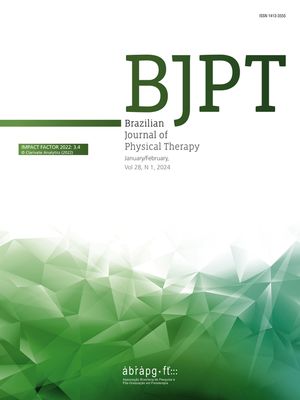
1st STUDENT SCIENTIFIC CONFERENCE OF THE BRAZILIAN ASSOCIATION FOR RESEARCH AND POSTGRADUATE IN PHYSIOTHERAPY (ABRAPG-FT)
More infoCurrent literature has shown that COVID-19 during pregnancy can have a negative impact on maternal-fetal clinical outcomes, including miscarriages, preterm birth, and increased mortality (MEDEIROS et al., 2021; YANG et al., 2020). More recently, an association was demonstrated between the experience of the pandemic and a higher risk of delay in the development of fine motor skills and communication in 1-year-old children (HUANG et al., 2021). In adults, multiple neuro-ophthalmological manifestations have been described in association with COVID-19: visual field defects, optic nerve dysfunctions, eye movement abnormalities and nystagmus (GOLD; GALETTA, 2021). These findings raise concerns about the risks that gestational COVID-19 may bring to healthy vision development in children. However, these visual outcomes have been little explored in this age group so far, leading to difficulty in the early diagnosis of these conditions. With this, there remains a scientific gap on the risks in the visual development of the child population exposed to the coronavirus.
ObjectiveTo evaluate fixation on the horizontal visual tracking in children of mothers exposed to gestational COVID-19.
MethodsThis is a cross-sectional study. The evaluator did a stimulus 25cm from the child's face with the optotype with a figurative face from the Visual Battery by Ricci in horizontal visual tracking. The response was filmed with a camera to capture the near-infrared spectrum, and the filming was processed by software developed for temporal facial mapping and iris movement. Visual fixation was analyzed in the videos of horizontal visual tracking processed by the software by 2 independent researchers who classified the visual fixation as unstable (<3s) or stable (≥3s) and recorded its total time. Statistical analysis was performed using the Statistica® 13.0 software, with a description in mean±SD. Between groups, the t-test was applied with p<0.05.
ResultsThe study included 15 infants separated into 2 groups, the COVID group with 7 participants, and the Control group with 8 participants. The sample showed birth weights of 3198±398 grams, and 1824±1040 grams, and gestational age of 38±1 weeks, and 33±5 weeks, in the COVID and Control groups, respectively. Unstable visual fixation was found in 14% of the COVID Group and 38% of the Control. The total fixation time was: 9.42 seconds ±6.32 (COVID), and 4.62 seconds ±3.11 (Control); however, it was not statistically significant (p=0.07).
ConclusionGestational COVID-19 has not been shown to influence stable fixation and total visual fixation time in infants.
ImplicationsThe results of the study show that the coronavirus pandemic has had a smaller impact on the visual development of infants, which can be associated with mitigation measures and vaccination of the population.
Conflict of interest: The authors declare no conflict of interest.
Acknowledgment: We appreciate the financial support from FAPESC Public Call Notice FAPESC Nº 26/2020.
Ethics committee approval: Ethics Committee for Research on Human Beings of the Federal University of Santa Catarina, CAAE 41500720.0.1001.0121.





